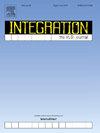极端多稳定系统的可观测性
IF 2.2
3区 工程技术
Q3 COMPUTER SCIENCE, HARDWARE & ARCHITECTURE
引用次数: 0
摘要
在控制工程和动力系统中,由于无法获得某些内部状态或测量成本过高,获得系统状态向量的精确测量可能具有挑战性。为了解决这些问题,观察者被用来重建系统的状态。虽然线性观测器已被证明对线性系统有效,但将其应用于非线性系统会带来额外的挑战和机遇。在本文中,我们探讨了一个线性观测器的设计和实现应用于六变量动力系统,即极端多稳态Rössler系统(EMRS)。我们提出的方法利用可观测性指数和图形表示来增强最大可观测性点的线性化过程。这种方法允许为Luenberger观测器生成增益集,从而提高其在估计复杂非线性系统(如EMRS)状态时的性能。我们的数值和实验结果证明了利用可观测系数线性化设计线性观测器的有效性。该观测器可以有效地跟踪和重建多稳定非线性系统的动力学,使线性观测器在非线性系统上的应用成为可能。本文章由计算机程序翻译,如有差异,请以英文原文为准。
Observability in systems with extreme multistability
In control engineering and dynamical systems, obtaining accurate measurements of a system’s state vector can be challenging due to the inaccessibility of certain internal states or the prohibitive cost of measurement. To address these issues, observers are employed to reconstruct the system’s state. While linear observers have proven effective for linear systems, applying them to nonlinear systems presents additional challenges and opportunities. In this paper, we explored the design and implementation of a linear observer applied on a 6-variable dynamical system, namely extreme multistable Rössler system (EMRS). Our proposed methodology leverages observability indices and graphical representations to enhance the linearization process at points of maximum observability. This approach allows for generating the gain set for a Luenberger observer, thereby improving its performance in estimating the states of a complex nonlinear system such as the EMRS. Our numerical and experimental results demonstrate the effectiveness of linearization using observability coefficients for the design of a linear observer. This observer can efficiently track and reconstruct the dynamics of a multi-stable nonlinear system, enabling the use of a linear observer on a nonlinear system.
求助全文
通过发布文献求助,成功后即可免费获取论文全文。
去求助
来源期刊

Integration-The Vlsi Journal
工程技术-工程:电子与电气
CiteScore
3.80
自引率
5.30%
发文量
107
审稿时长
6 months
期刊介绍:
Integration''s aim is to cover every aspect of the VLSI area, with an emphasis on cross-fertilization between various fields of science, and the design, verification, test and applications of integrated circuits and systems, as well as closely related topics in process and device technologies. Individual issues will feature peer-reviewed tutorials and articles as well as reviews of recent publications. The intended coverage of the journal can be assessed by examining the following (non-exclusive) list of topics:
Specification methods and languages; Analog/Digital Integrated Circuits and Systems; VLSI architectures; Algorithms, methods and tools for modeling, simulation, synthesis and verification of integrated circuits and systems of any complexity; Embedded systems; High-level synthesis for VLSI systems; Logic synthesis and finite automata; Testing, design-for-test and test generation algorithms; Physical design; Formal verification; Algorithms implemented in VLSI systems; Systems engineering; Heterogeneous systems.
 求助内容:
求助内容: 应助结果提醒方式:
应助结果提醒方式:


